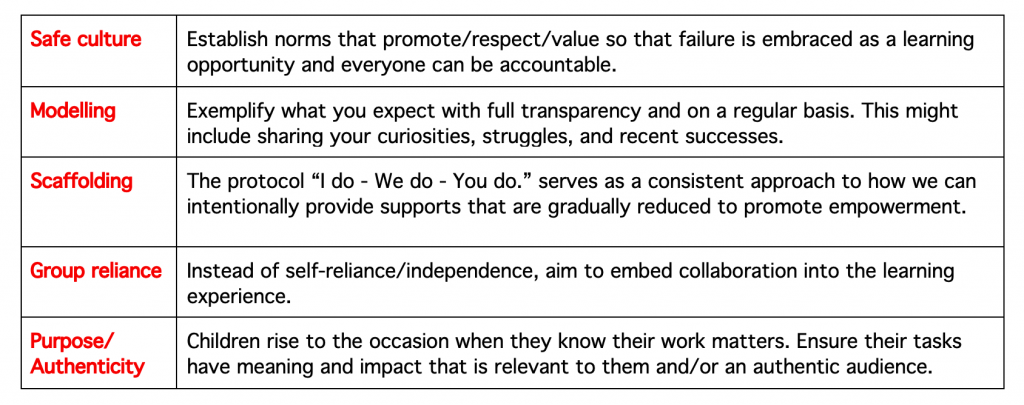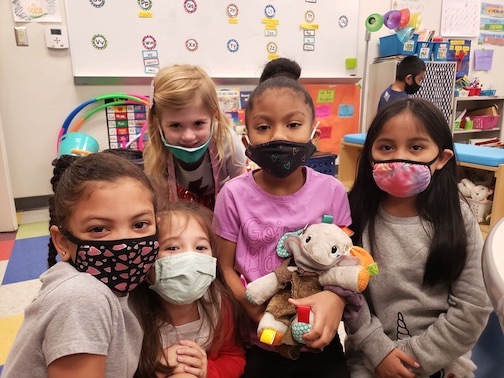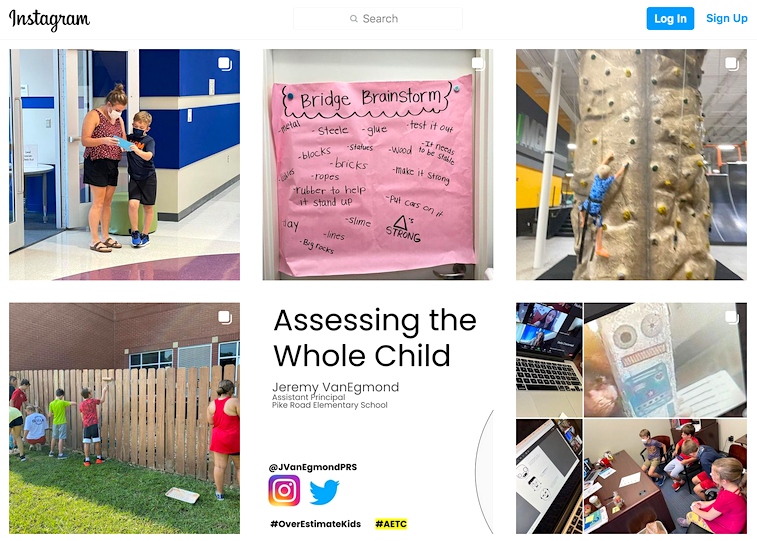 By Jeremy VanEgmond
By Jeremy VanEgmond
Assistant Principal
Pike Road Elementary School
In mid-2020, I took some time to make the case with adults in schools and homes for our need to #OverEstimateKids. I shared my thinking on The ABPC Professional Learning Blog and talked about the ideas during an episode of Concise Conversations with Cathy & Jackie.
Since then, I’ve been challenged to flesh out what it means to overestimate kids in various ecosystems so that we can genuinely discuss the actual methods of making this a reality with kids everywhere. Here’s what I’ve learned.
Critical ingredients for success
In the Japanese culture, there is a task children complete when they are 3-5 years old called “My First Errand” (Hajimete no Otsukai). In short, parents send their child on an errand that likely involves any combination of crossing streets, riding trains, and operating elevators.
 There’s a TV show that documents some of these journeys with hidden cameras and it’s astonishing to see how the children work through fear, exercise patience and resilience, and arrive home nonchalantly with the sushi purchased from the market several blocks away. Did I mention they are five?
There’s a TV show that documents some of these journeys with hidden cameras and it’s astonishing to see how the children work through fear, exercise patience and resilience, and arrive home nonchalantly with the sushi purchased from the market several blocks away. Did I mention they are five?
In the last 18 months I’ve tried to intentionally record what preceded any moments like these in American culture – instances where I saw kids accomplish things beyond what I thought was possible.
Here are the ingredients in those environments that allowed kids to flourish and that I believe we need to emulate:
 Watch how these ingredients are explicitly illustrated in the five-minute video Nathanael’s “First Errand” – it’s a beautiful picture of how everybody is involved in helping a five-year old boy in Singapore accomplish something extraordinary.
Watch how these ingredients are explicitly illustrated in the five-minute video Nathanael’s “First Errand” – it’s a beautiful picture of how everybody is involved in helping a five-year old boy in Singapore accomplish something extraordinary.
Get a view from their perspective
This year my daughter saved up for a Polaroid camera. Although she admired the instant gratification this device provides, I saw something deeper emerge that I couldn’t put my finger on until I saw it happen in other places.
 At my school, for example, kids were documenting the journey of Mabel all across our community using pictures and videos. Then they exchanged these artifacts with other kids their age from schools around the globe who were doing the same thing, giving them multiple opportunities to appreciate what makes humans similar and equally beautiful but also more aware of the brokenness humans might experience in different cultures.
At my school, for example, kids were documenting the journey of Mabel all across our community using pictures and videos. Then they exchanged these artifacts with other kids their age from schools around the globe who were doing the same thing, giving them multiple opportunities to appreciate what makes humans similar and equally beautiful but also more aware of the brokenness humans might experience in different cultures.
This was not about filling a camera roll or making social media posts – it was their excitement to share things from their perspective that was so empowering. Even kids who didn’t have cameras were making their own worlds in Minecraft, animating objects with Chatterpix, or creating art using code to represent how they feel or tell a story.
My #APHUG learners completed a project for Cultural Patterns & Processes where they analyzed films & books for examples of culture, researched a culture of their choice, and created their own books or Minecraft worlds to represent the culture. #PikeRoadWay pic.twitter.com/zWPUHrdLcX
— Kathleen Griswell (@MrsGEdu) November 5, 2020
In the age where almost any device has a camera or access to an app store, let’s leverage this hardware and software to see things from their perspective. It’s in this posture we will better appreciate their unique and uncontainable capabilities.
A culture of intellectual curiosity
We must ask the right questions in the right way. I knew the book Quality Questioning (Walsh/Sattes) held some more practical components to the “how” of #OverEstimateKids so I pulled some of the best goodies from Jackie Walsh and Beth Sattes to provide us with the mindsets and methods needed to achieve an even more tangible approach.
- Ask a good question. Kids in school are asked 200-300 questions each day but 90% of them are surface level and most wrong answers are quickly corrected or met with “…anyone else?” We will only prompt thinking if we are asking thought-provoking questions.
- Then wait/listen. – It’s called “Think time” (or “wait time”) – where everyone involved in the discussion takes time to think about what has just been said or what they might say next . If it feels awkward, that’s good. Wait some more (Walsh/Sattes describe this as “think time 2.” ) Resist the urge to complete or correct too quickly – we too often miss what kids are capable of because we assume they need us to interject.
- Process responses together. There’s a healthy structure to process responses/feedback in a way that “keeps the thinking and dialogue alive.” If there is a transparent and reciprocal flow, thinking and learning will flourish.
As we start building learning experiences on the foundation of these principles, there will be shining moments where kids make connections we never gave them a chance to make before. Even better, they’ll start asking questions we never imagined they had the capacity to compose.
A cause of great urgency
If I’m honest, this past year I also observed how there’s a lot working against us as we seek to #OverEstimateKids. Our society is becoming more bogged down with consumerism, impatience, and risk-averse decision making while also being driven by marketing and other kinds of algorithms that manipulate us beyond our own consciousness.
But that’s why this cause is something we must concentrate on with the utmost intentionality and urgency! Since our students are still young and curious, there’s still hope. Let’s give kids a chance (or just get out of the way) so they can imagine without cynicism and create a #NewAndBetterNormal for the world we are all living in.
Over. Estimate. Kids.
Jeremy VanEgmond is Assistant Principal at Pike Road Elementary School in Pike Road, Alabama. He grew up in Hamilton, Ontario CA where his parents were both educators. He joined the PRES staff in 2015 as a math teacher and became AP after obtaining his M. Ed. in Instructional Leadership. Jeremy enjoys music, videography, cooking, and gardening. He and his wife Rachel have three children. Follow him on Twitter @JVanEgmondPRS and on Instagram at #overestimatekids.


0 Comments on "Our Students Will Thrive If We #OverEstimateKids (The Sequel – One Year Later)"